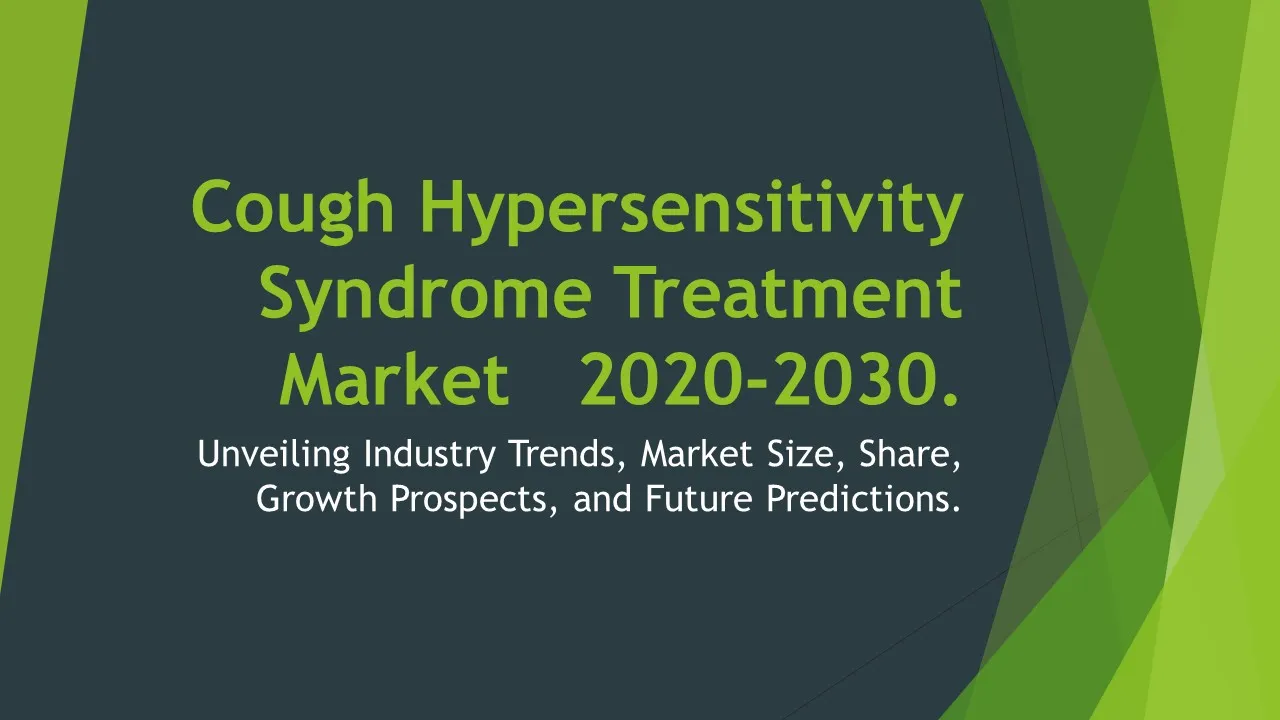Gefitinib
Gefitinib Market Segments - by Product Type (Generic Gefitinib, Branded Gefitinib), Application (Non-Small Cell Lung Cancer, Pancreatic Cancer, Other Cancers), Distribution Channel (Hospital Pharmacies, Retail Pharmacies, Online Pharmacies), Region (North America, Europe, Asia Pacific, Latin America, Middle East & Africa) - Global Industry Analysis, Growth, Share, Size, Trends, and Forecast
- Report Preview
- Table Of Content
- Segments
- Methodology
Gefitinib Market Outlook
The global Gefitinib market is projected to reach approximately USD 3 billion by 2028, growing at a CAGR of around 8% during the forecast period from 2023 to 2028. This growth is primarily driven by the rising prevalence of non-small cell lung cancer (NSCLC), the increasing approval of targeted therapies, and the growing demand for personalized medicine. Additionally, advancements in healthcare infrastructure, increased investment in cancer research, and the expansion of healthcare insurance coverage are further expected to bolster market growth. The shift towards precision medicine and the rising awareness regarding the benefits of early cancer diagnosis have also played a significant role in enhancing treatment rates and the overall demand for Gefitinib.
Growth Factor of the Market
The Gefitinib market has witnessed substantial growth owing to several factors that are reshaping the landscape of cancer treatment. One of the primary growth drivers is the increasing incidence of lung cancer, particularly NSCLC, which is one of the most common types of lung cancer. As more patients are diagnosed with this condition, there is a greater demand for effective therapeutic options, including Gefitinib, which targets the epidermal growth factor receptor (EGFR) mutations commonly found in NSCLC. Furthermore, the advancement in pharmaceutical technologies has led to the development of more effective drug formulations, thereby attracting healthcare providers to adopt Gefitinib as a preferred treatment option. Another significant factor contributing to market growth is the increasing investment in cancer research and development from pharmaceutical companies, which is aimed at enhancing the efficacy and safety profiles of existing medications. Moreover, the growing trend of personalized medicine, where treatments are tailored to the individual characteristics of each patient, is expected to support the uptake of targeted therapies such as Gefitinib. Lastly, the expansion of healthcare coverage and improved access to medications in emerging economies are likely to open up new avenues for market players.
Key Highlights of the Market
- Growing prevalence of non-small cell lung cancer driving demand.
- Advancements in pharmaceutical research and development enhancing drug options.
- Increase in healthcare expenditure resulting in better access to medications.
- Rising awareness regarding targeted therapies and personalized medicine.
- Emerging markets providing new growth opportunities for market players.
By Product Type
Generic Gefitinib:
Generic Gefitinib has emerged as a significant player in the market, primarily due to its affordability and accessibility compared to branded alternatives. The introduction of generic versions has enabled many patients, especially in developing regions, to access effective cancer treatment which was previously limited due to high costs associated with branded drugs. The production of generic drugs adheres to the same stringent regulatory standards as branded drugs, thereby ensuring that patients receive comparable efficacy and safety. As patents on branded Gefitinib expire, an increasing number of generic formulations are likely to enter the market, further driving demand. Moreover, as healthcare providers increasingly recognize the cost-effectiveness of generics, this segment is expected to witness robust growth in the coming years, contributing to the overall expansion of the Gefitinib market.
Branded Gefitinib:
Branded Gefitinib, despite facing competition from generics, continues to maintain a significant market share due to its established efficacy and brand loyalty. Branded formulations are often associated with better marketing and brand recognition, which can influence prescriptions by healthcare providers. Additionally, branded Gefitinib is often backed by extensive clinical data and studies that validate its effectiveness, leading to continued trust among oncologists and patients alike. The presence of strong brand names can also result in a higher willingness to pay among consumers who prioritize perceived quality and reliability in cancer treatment. Furthermore, pharmaceutical companies are actively investing in research to enhance the formulation of branded drugs, ensuring they remain competitive in an increasingly crowded market. As a result, the branded segment is anticipated to continue holding a considerable market position, even as generics proliferate.
By Application
Non-Small Cell Lung Cancer:
Non-small cell lung cancer (NSCLC) represents the largest application segment for Gefitinib, driven by its targeted action against EGFR mutations that are prevalent in this type of cancer. NSCLC accounts for approximately 85% of all lung cancer cases, making it a primary focus for cancer therapies, including Gefitinib. The drug's effectiveness in prolonging survival rates and improving quality of life for patients has led to its widespread adoption in clinical practice. Additionally, with increasing efforts to screen for lung cancer and early diagnosis, more patients are being treated with targeted therapies, thus boosting demand for Gefitinib. The ongoing research into combination therapies that incorporate Gefitinib is expected to further enhance treatment outcomes, solidifying its position in the NSCLC treatment paradigm.
Pancreatic Cancer:
The application of Gefitinib in pancreatic cancer is emerging as a noteworthy area of exploration. Although primarily utilized for NSCLC, research has indicated that EGFR inhibitors like Gefitinib may also offer therapeutic benefits in treating pancreatic cancer, especially in patients with specific genetic mutations. The incidence of pancreatic cancer is rising globally, prompting the need for innovative treatment strategies. Ongoing clinical trials are investigating the efficacy of Gefitinib in combination with other chemotherapeutic agents, which could lead to improved treatment regimens for pancreatic cancer patients. As awareness grows regarding the potential applications of Gefitinib beyond lung cancer, more oncologists may consider it as part of a multidisciplinary approach to treating pancreatic cancer.
Other Cancers:
The other cancers segment encompasses various malignancies where Gefitinib may play a role, albeit to a lesser extent than in NSCLC and pancreatic cancer. Research into the use of EGFR inhibitors in other cancers, including head and neck cancers, has gained traction, as these tumors also exhibit aberrations in the EGFR pathway. The versatility of Gefitinib as a targeted therapy opens doors for its application in diverse oncological settings. The potential for expanded indications is driven by ongoing clinical trials aimed at uncovering the efficacy of Gefitinib in different tumor types. As the body of evidence supporting Gefitinib's use in other cancers grows, there is a likelihood of an uptick in prescriptions, reflecting a broader acceptance of targeted therapies across various cancer types.
By Distribution Channel
Hospital Pharmacies:
Hospital pharmacies are a crucial distribution channel for Gefitinib, as they cater to patients who require medications during their inpatient care or outpatient treatments. The presence of pharmacists within the hospital allows for tailored patient management and adherence to therapy. Hospital pharmacies often stock medications that are critical for cancer treatment, ensuring immediate access to medications like Gefitinib when prescribed by oncologists. Additionally, these pharmacies may offer patient counseling on drug administration and potential side effects, enhancing patient support. The trend toward integrated healthcare systems, where hospitals and outpatient services are consolidated, is likely to bolster the role of hospital pharmacies in delivering Gefitinib to patients.
Retail Pharmacies:
Retail pharmacies serve as an essential distribution channel for Gefitinib, providing convenient access for outpatient cancer patients. As patients transition from hospital-based care to home, retail pharmacies play a pivotal role in ensuring they receive their prescribed medications timely. These pharmacies often engage in patient education and support efforts, which are vital for managing chronic conditions like cancer. With an increasing number of patients opting for combination therapies, retail pharmacies are positioned to meet these needs by stocking a range of cancer medications, including Gefitinib. Moreover, the growing trend toward pharmacist-led patient care models, where pharmacists take an active role in medication management, will likely further enhance the distribution of Gefitinib through retail channels.
Online Pharmacies:
Online pharmacies have emerged as a significant distribution channel for Gefitinib, especially in light of the growing trend towards digital healthcare solutions. The convenience of ordering medications online allows patients to receive their prescriptions without the need to visit a pharmacy physically, which is particularly beneficial for those undergoing cancer treatment who may experience fatigue or mobility issues. Online pharmacies often provide home delivery services, ensuring that patients receive their medications promptly. Furthermore, many online platforms offer resources for patients and caregivers, including information on drug interactions and side effects. As telehealth services expand, the role of online pharmacies in distributing Gefitinib is expected to rise, making cancer treatments more accessible to a broader audience.
By Region
The Gefitinib market is witnessing significant growth across various regions, driven primarily by the rising prevalence of lung cancer and the increasing adoption of targeted therapies. North America holds a dominant position in the market, accounting for approximately 45% of the global share, attributed to advanced healthcare infrastructure, high healthcare expenditure, and strong regulatory frameworks that support the approval of targeted therapies. The United States, in particular, has a well-established market for cancer therapeutics, with ongoing research and development activities further boosting the demand for Gefitinib. This region is projected to grow at a CAGR of around 7% during the forecast period, indicating sustained interest in innovation and improved treatment outcomes.
Europe is another significant market for Gefitinib, contributing about 30% to the global revenue. The region benefits from a combination of a robust healthcare system and a high level of patient awareness regarding cancer treatments. Countries like Germany, France, and the UK are leading in terms of market share, supported by favorable reimbursement policies and a growing emphasis on precision medicine. On the other hand, the Asia Pacific region is rapidly emerging, with approximately 20% of the global share, driven by increasing cancer incidences and improving access to healthcare services. Countries like China and India are expected to witness substantial market growth, fueled by increasing investments in healthcare infrastructure and growing awareness about cancer treatment options.
Opportunities
One of the primary opportunities for the Gefitinib market lies in the growing focus on personalized medicine, which emphasizes tailoring treatment strategies based on the genetic profile of individual patients. As more research uncovers the genetic mutations associated with various cancers, the demand for targeted therapies like Gefitinib is likely to rise. Pharmaceutical companies are increasingly investing in clinical trials aimed at expanding the indications for Gefitinib, exploring its use in various malignancies, including those with less common mutations. This shift towards precision oncology creates a favorable environment for Gefitinib, allowing stakeholders to cater to a broader patient population and enhance treatment outcomes. Additionally, the rising trend of telemedicine and online consultations can also facilitate patient access to cancer therapies, providing an opportunity for pharmacies to expand their reach through telehealth platforms.
Another significant opportunity lies in the emerging markets of Asia Pacific and Latin America, where the demand for effective cancer treatments is on the rise. As healthcare infrastructure improves and governments invest in healthcare systems, there is a growing potential for increasing access to medications such as Gefitinib. Pharmaceutical companies are encouraged to explore partnerships with local distributors and healthcare providers to penetrate these markets effectively. Moreover, with the increasing number of cancer survivors, there is a rising need for long-term follow-up therapies, including those that involve Gefitinib. The potential to establish comprehensive cancer care programs that integrate targeted therapies into treatment regimens can significantly enhance market growth in these regions.
Threats
The Gefitinib market faces several threats that could hinder its growth trajectory. One of the most significant threats is intense competition from generic formulations that offer similar therapeutic benefits at a lower cost. As more generic versions of Gefitinib enter the market following patent expirations, the pricing pressure may lead to reduced profit margins for branded manufacturers. Furthermore, the proliferation of generic alternatives may also result in a decline in market share for branded Gefitinib, prompting pharmaceutical companies to reconsider their strategies for market positioning. Additionally, the potential for adverse drug reactions and the emergence of resistance to targeted therapies are significant concerns for oncologists. These factors can impact patient adherence to treatment regimens and may limit the long-term effectiveness of Gefitinib.
Another critical threat to the Gefitinib market is the regulatory environment surrounding oncology drugs. The stringent approval processes for new cancer therapies can pose challenges for manufacturers looking to bring innovative products to market. Delays in regulatory approvals can hinder the introduction of new formulations or combination therapies that could enhance the efficacy of Gefitinib. Additionally, regulatory changes or shifts in healthcare policies can significantly impact market dynamics, affecting the overall accessibility and affordability of cancer treatments. The ongoing issues related to drug pricing and reimbursement policies may also create uncertainties for stakeholders in the Gefitinib market, affecting investment decisions and the development of new therapies.
Competitor Outlook
- Roche
- AstraZeneca
- Teva Pharmaceutical Industries Ltd.
- Sun Pharmaceutical Industries Ltd.
- Hikma Pharmaceuticals PLC
- Dr. Reddy's Laboratories Ltd.
- Natco Pharma Ltd.
- Novartis AG
- Pfizer Inc.
- GlaxoSmithKline plc
- Merck & Co., Inc.
- Sanofi S.A.
- Celgene Corporation
- OncoMed Pharmaceuticals
- Genentech, Inc.
The competitive landscape of the Gefitinib market is characterized by several key players vying for market share, each employing distinct strategies to strengthen their positions. Major pharmaceutical companies, including Roche and AstraZeneca, are actively engaged in research and development to enhance their product offerings through innovative formulations and combination therapies. These companies have established strong brand identities and trust among healthcare providers, facilitating their continued dominance in the market. Moreover, the entry of generic competitors such as Teva and Sun Pharmaceutical further intensifies competition, as they provide cost-effective alternatives that attract price-sensitive patients. The strategic collaborations and partnerships between manufacturers and healthcare providers also create opportunities for enhanced market penetration and distribution of Gefitinib.
Roche, a pioneer in targeted therapies, has maintained a strong foothold in the Gefitinib market through its commitment to continuous research. The company has invested significantly in clinical trials to explore the applications of Gefitinib beyond lung cancer, seeking to expand its indications and capitalize on new patient populations. Similarly, AstraZeneca is known for its innovative oncology pipeline, focusing on developing next-generation therapies that complement existing treatments. Their aggressive marketing strategies and strong relationships with oncologists enable them to remain competitive in a rapidly evolving landscape.
Generic manufacturers like Dr. Reddy's Laboratories and Natco Pharma have gained traction by producing affordable versions of Gefitinib, catering to growing demand in price-sensitive markets. Their ability to rapidly scale production and reduce costs is a critical factor that enables them to compete effectively against branded options. As the market dynamics evolve with the introduction of new players, maintaining a competitive edge will require these companies to innovate and differentiate their offerings. Overall, the Gefitinib market is poised for continued growth, driven by advancements in research, increasing patient accessibility, and the ongoing evolution of oncology therapeutics.
1 Appendix
- 1.1 List of Tables
- 1.2 List of Figures
2 Introduction
- 2.1 Market Definition
- 2.2 Scope of the Report
- 2.3 Study Assumptions
- 2.4 Base Currency & Forecast Periods
3 Market Dynamics
- 3.1 Market Growth Factors
- 3.2 Economic & Global Events
- 3.3 Innovation Trends
- 3.4 Supply Chain Analysis
4 Consumer Behavior
- 4.1 Market Trends
- 4.2 Pricing Analysis
- 4.3 Buyer Insights
5 Key Player Profiles
- 5.1 Roche
- 5.1.1 Business Overview
- 5.1.2 Products & Services
- 5.1.3 Financials
- 5.1.4 Recent Developments
- 5.1.5 SWOT Analysis
- 5.2 AstraZeneca
- 5.2.1 Business Overview
- 5.2.2 Products & Services
- 5.2.3 Financials
- 5.2.4 Recent Developments
- 5.2.5 SWOT Analysis
- 5.3 Novartis AG
- 5.3.1 Business Overview
- 5.3.2 Products & Services
- 5.3.3 Financials
- 5.3.4 Recent Developments
- 5.3.5 SWOT Analysis
- 5.4 Pfizer Inc.
- 5.4.1 Business Overview
- 5.4.2 Products & Services
- 5.4.3 Financials
- 5.4.4 Recent Developments
- 5.4.5 SWOT Analysis
- 5.5 Sanofi S.A.
- 5.5.1 Business Overview
- 5.5.2 Products & Services
- 5.5.3 Financials
- 5.5.4 Recent Developments
- 5.5.5 SWOT Analysis
- 5.6 Genentech, Inc.
- 5.6.1 Business Overview
- 5.6.2 Products & Services
- 5.6.3 Financials
- 5.6.4 Recent Developments
- 5.6.5 SWOT Analysis
- 5.7 Merck & Co., Inc.
- 5.7.1 Business Overview
- 5.7.2 Products & Services
- 5.7.3 Financials
- 5.7.4 Recent Developments
- 5.7.5 SWOT Analysis
- 5.8 Natco Pharma Ltd.
- 5.8.1 Business Overview
- 5.8.2 Products & Services
- 5.8.3 Financials
- 5.8.4 Recent Developments
- 5.8.5 SWOT Analysis
- 5.9 Celgene Corporation
- 5.9.1 Business Overview
- 5.9.2 Products & Services
- 5.9.3 Financials
- 5.9.4 Recent Developments
- 5.9.5 SWOT Analysis
- 5.10 GlaxoSmithKline plc
- 5.10.1 Business Overview
- 5.10.2 Products & Services
- 5.10.3 Financials
- 5.10.4 Recent Developments
- 5.10.5 SWOT Analysis
- 5.11 OncoMed Pharmaceuticals
- 5.11.1 Business Overview
- 5.11.2 Products & Services
- 5.11.3 Financials
- 5.11.4 Recent Developments
- 5.11.5 SWOT Analysis
- 5.12 Hikma Pharmaceuticals PLC
- 5.12.1 Business Overview
- 5.12.2 Products & Services
- 5.12.3 Financials
- 5.12.4 Recent Developments
- 5.12.5 SWOT Analysis
- 5.13 Dr. Reddy's Laboratories Ltd.
- 5.13.1 Business Overview
- 5.13.2 Products & Services
- 5.13.3 Financials
- 5.13.4 Recent Developments
- 5.13.5 SWOT Analysis
- 5.14 Sun Pharmaceutical Industries Ltd.
- 5.14.1 Business Overview
- 5.14.2 Products & Services
- 5.14.3 Financials
- 5.14.4 Recent Developments
- 5.14.5 SWOT Analysis
- 5.15 Teva Pharmaceutical Industries Ltd.
- 5.15.1 Business Overview
- 5.15.2 Products & Services
- 5.15.3 Financials
- 5.15.4 Recent Developments
- 5.15.5 SWOT Analysis
- 5.1 Roche
6 Market Segmentation
- 6.1 Gefitinib Market, By Application
- 6.1.1 Non-Small Cell Lung Cancer
- 6.1.2 Pancreatic Cancer
- 6.1.3 Other Cancers
- 6.2 Gefitinib Market, By Product Type
- 6.2.1 Generic Gefitinib
- 6.2.2 Branded Gefitinib
- 6.3 Gefitinib Market, By Distribution Channel
- 6.3.1 Hospital Pharmacies
- 6.3.2 Retail Pharmacies
- 6.3.3 Online Pharmacies
- 6.1 Gefitinib Market, By Application
7 Competitive Analysis
- 7.1 Key Player Comparison
- 7.2 Market Share Analysis
- 7.3 Investment Trends
- 7.4 SWOT Analysis
8 Research Methodology
- 8.1 Analysis Design
- 8.2 Research Phases
- 8.3 Study Timeline
9 Future Market Outlook
- 9.1 Growth Forecast
- 9.2 Market Evolution
10 Geographical Overview
- 10.1 Europe - Market Analysis
- 10.1.1 By Country
- 10.1.1.1 UK
- 10.1.1.2 France
- 10.1.1.3 Germany
- 10.1.1.4 Spain
- 10.1.1.5 Italy
- 10.1.1 By Country
- 10.2 Gefitinib Market by Region
- 10.3 Asia Pacific - Market Analysis
- 10.3.1 By Country
- 10.3.1.1 India
- 10.3.1.2 China
- 10.3.1.3 Japan
- 10.3.1.4 South Korea
- 10.3.1 By Country
- 10.4 Latin America - Market Analysis
- 10.4.1 By Country
- 10.4.1.1 Brazil
- 10.4.1.2 Argentina
- 10.4.1.3 Mexico
- 10.4.1 By Country
- 10.5 North America - Market Analysis
- 10.5.1 By Country
- 10.5.1.1 USA
- 10.5.1.2 Canada
- 10.5.1 By Country
- 10.6 Middle East & Africa - Market Analysis
- 10.6.1 By Country
- 10.6.1.1 Middle East
- 10.6.1.2 Africa
- 10.6.1 By Country
- 10.1 Europe - Market Analysis
11 Global Economic Factors
- 11.1 Inflation Impact
- 11.2 Trade Policies
12 Technology & Innovation
- 12.1 Emerging Technologies
- 12.2 AI & Digital Trends
- 12.3 Patent Research
13 Investment & Market Growth
- 13.1 Funding Trends
- 13.2 Future Market Projections
14 Market Overview & Key Insights
- 14.1 Executive Summary
- 14.2 Key Trends
- 14.3 Market Challenges
- 14.4 Regulatory Landscape
Segments Analyzed in the Report
The global Gefitinib market is categorized based on
By Product Type
- Generic Gefitinib
- Branded Gefitinib
By Application
- Non-Small Cell Lung Cancer
- Pancreatic Cancer
- Other Cancers
By Distribution Channel
- Hospital Pharmacies
- Retail Pharmacies
- Online Pharmacies
By Region
- North America
- Europe
- Asia Pacific
- Latin America
- Middle East & Africa
Key Players
- Roche
- AstraZeneca
- Teva Pharmaceutical Industries Ltd.
- Sun Pharmaceutical Industries Ltd.
- Hikma Pharmaceuticals PLC
- Dr. Reddy's Laboratories Ltd.
- Natco Pharma Ltd.
- Novartis AG
- Pfizer Inc.
- GlaxoSmithKline plc
- Merck & Co., Inc.
- Sanofi S.A.
- Celgene Corporation
- OncoMed Pharmaceuticals
- Genentech, Inc.
- Publish Date : Jan 21 ,2025
- Report ID : PH-66120
- No. Of Pages : 100
- Format : |
- Ratings : 4.5 (110 Reviews)









